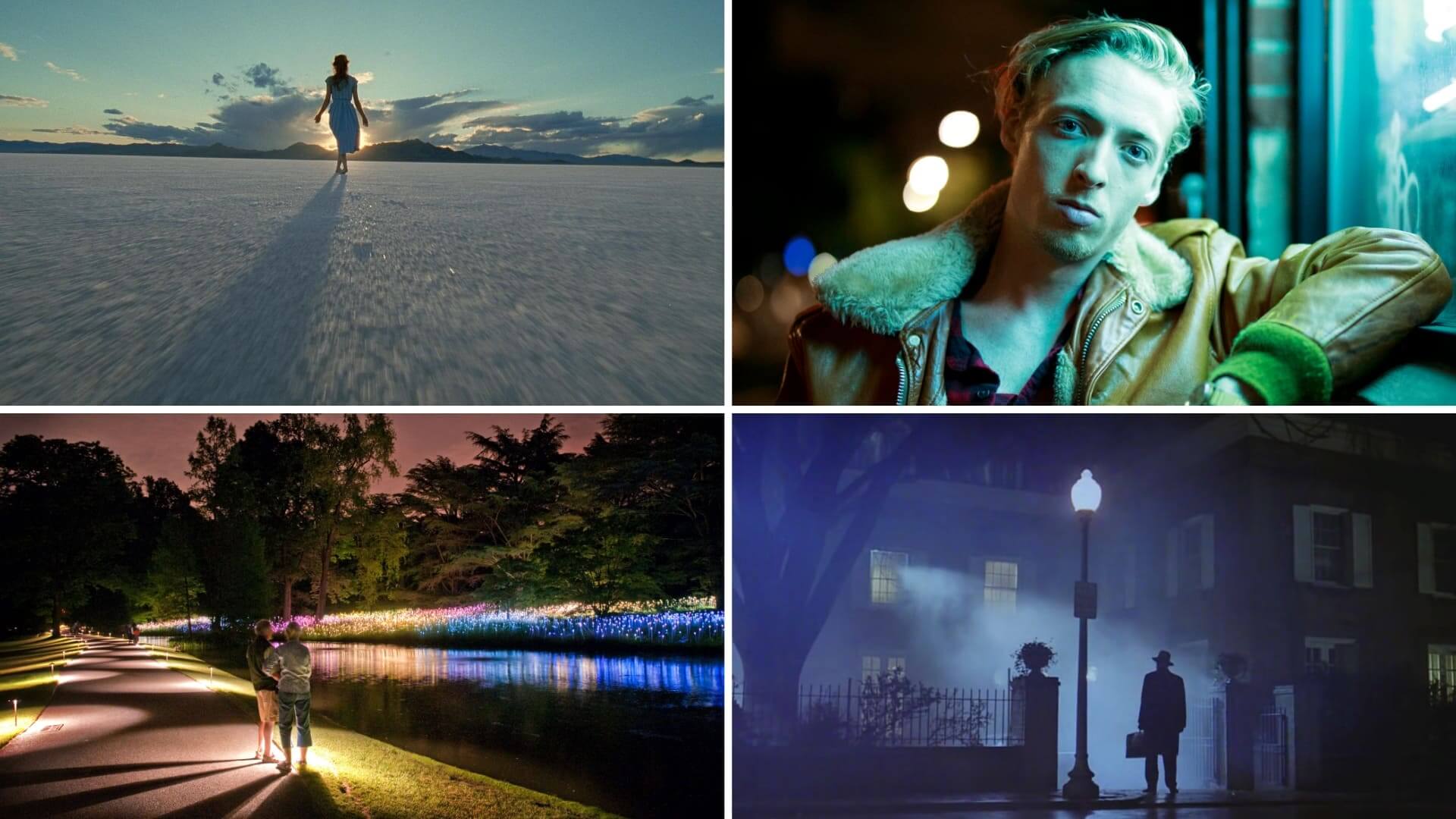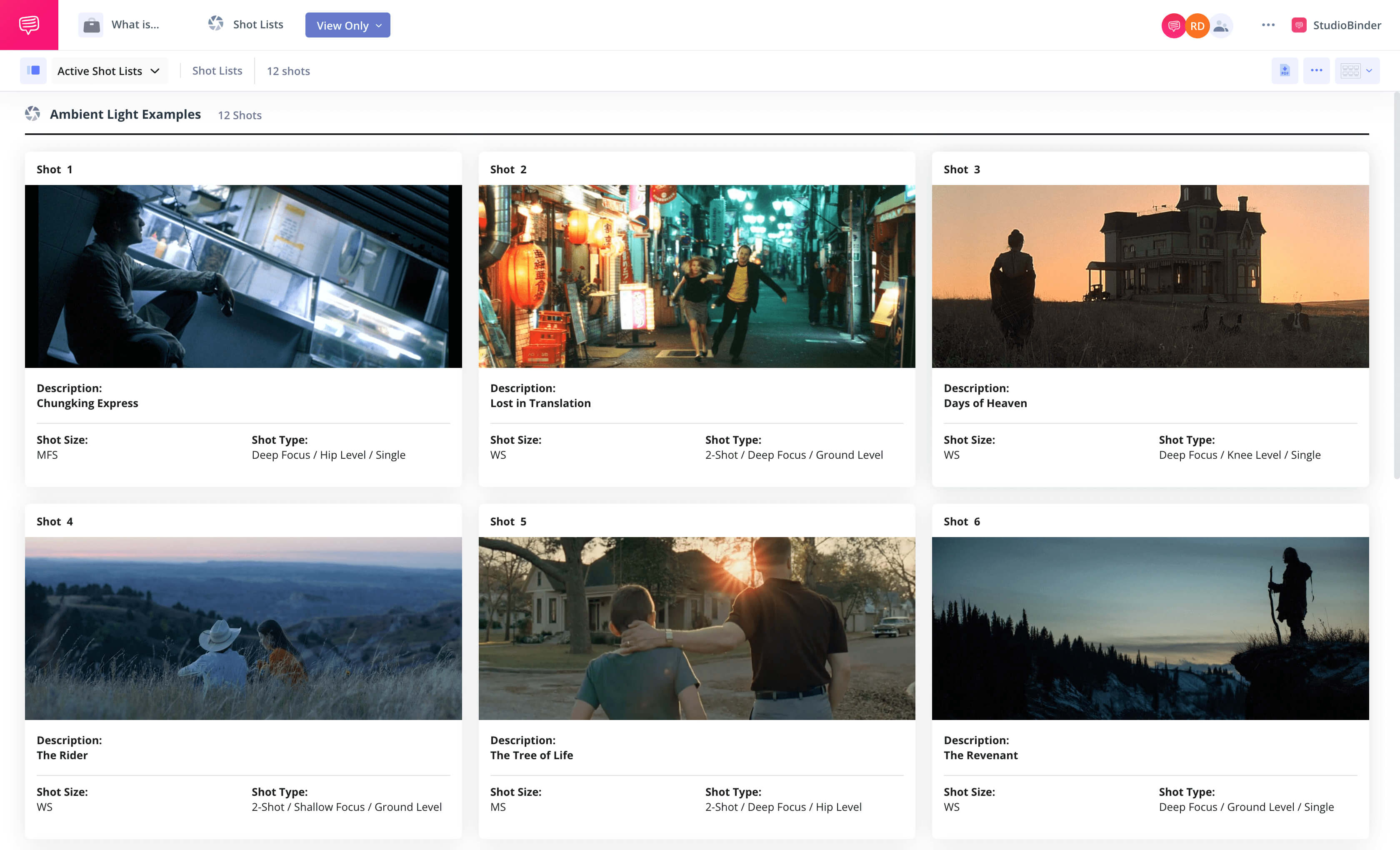If you’re a photographer or cinematographer, chances are you’ve used ambient light, whether you’ve known it or not. This type of light is everywhere, and can make or break your image — sometimes it helps, sometimes it’s unwanted. So, what is ambient light? In this article, we’ll walk through what ambient illumination is, and how you can use it to your advantage for your next shoot.
Ambient Light Definition
First, let's define ambient light
Ask ten different cinematographers, "what is ambient light" and you might get ten different answers. It is a bit of an umbrella term and its meaning encompasses innumerable types of luminescence. Let’s nail down the most agreed-upon definition: how can we define ambient light?
AMBIENT LIGHT DEFINITION
What is Ambient Light?
Ambient light is any light a photographer or cinematographer did not bring to the shoot. Also known as available light, it’s any light that you haven’t set up yourself. This includes natural light or even pre-existing lighting built in and around the location where you're shooting. Depending on the particular budgetary, creative and practical needs of a production, this "extra" light is a good or a bad thing.
Ambient Light Examples:
- Sunlight
- Moonlight
- Streetlamp
- Overhead lights at a restaurant
So, now that we have a basic understanding of what this type of light is, how do photographers and cinematographers use it? This video shows how availabe light can be used and how it brings a different quality of light than a flash.
Ambient light or flash?
Differences Explained
Ambient light vs. natural light
Before we get into some of the uses of this type of light, it’s important to distinguish ambient from natural light. Since the two terms will often be used interchangeably but there's a key distinction to be made, and it's important to know how they are categorized.
Not all ambient light is natural light, but all natural light is ambient light.
Natural light is any light provided by, you guessed it, nature — this could be the sun, the moon, or some bioluminescent subterranean creature. By definition, natural light isn’t brought to the set by a cinematographer. It’s there or it’s not. This means that it also qualifies as ambient.
But ambient illumination can refer to any artificial light which wasn’t brought to set, like a neon street sign or the fluorescent light of a subway. These examples wouldn’t be natural light.
Related Posts
Ambient Lighting Examples
Ambient light in film
This kind of lighting can have a variety of uses in film, and is only used more and more now that most filmmakers have transitioned from film to digital. Which allows for cameras that are more sensitive to ambient illumination.
Let’s look at a few examples. Ambient lighting examples abound, and you can look at some of the most gripping examples in this collection of examples we made using StudioBinder's shot listing software.
Click the image link below to download this storyboard to use as reference as you set out to plan the lighting for your next project.
Let’s look at a few of these ambient lighting examples in depth.
THE RIDER (2017)

What is Ambient Light in Chloé Zhao’s The Rider
So far, Academy Award-winning director Chloé Zhao only has a few films under her belt. But she’s already established a signature visual palette. Zhao relies heavily on natural ambient light photography in both The Rider and Nomadland to stunning effect.
Both films are preoccupied with the vast beauty of the American West, and how it often is at odds with our modern culture. By using natural and available light, Zhao emphasizes this theme, and creates beautiful images to boot.
CHUNGKING EXPRESS (1994)

Fluorescents, and more fluorescents in Chungking Express
Like Chloé Zhao, legendary director Wong Kar-wai has created a distinctive visual style using primarily available light. Unlike Zhao, however, Wong’s light comes from the neon-soaked streets of Hong Kong and other metropolises.
Wong’s deliberate use of these lights viscerally highlights the artificial labyrinth in which his characters reside. His images are stylized, but rooted in realism — we feel like we’re on the streets in the early hours of the morning.
BREAKING THE WAVES (1996)

Natural lighting in Breaking the Waves
We can’t talk about ambient light in film without mentioning the Dogme 95 movement. This group of filmmakers created a manifesto disavowing big-budget filmmaking in an attempt to focus on storytelling and direction.
One of the rules written in the Dogme 95 treatise was a sole reliance on available light. Or as they put it, “no special lighting.” One of the leaders of the movement, Lars von Trier, went on to make Breaking the Waves, arguably the greatest film of the movement (though it did break a few of the rules he had laid out). Breaking the Waves is a testament to naturalism, the result of a director wholly focused on his actors and story.
Ambient Light Definition
Using ambient light
It’s probably obvious by now that except for the most controlled sets, ambient light is pretty much unavoidable. So, it’s best to make the most of it!
A common misconception about ambient light photography is that a photographer doesn’t have control over it. Even though you might not be able to control the light’s existence, you can still control how it hits your subject and what purpose it serves in your image.
Because ambient light is already part of the location, it makes the perfect motivated light. In other words, lighting in which the source is shown or "motivated" in the shot. Here's DP Roger Deakins on how he uses motivated light in films like 1917.
Ambient Illumination & Motivated Lighting • Subscribe on YouTube
Harsh noontime sunlight might be best used as a key light, or perhaps you use a bounce in order to utilize it as a fill light. If you’re shooting a horror film, maybe you’ll use moonlight for some spooky rim light. The possibilities are endless, and not out of your control.

The moon provides rim light in Arthur and the Invisibles
UP NEXT
Practical Lighting in Film
So, now you’re a master of ambient light photography: what next? Time to learn about practical lighting, some of which can be ambient lighting examples, but some might not be. Read our article on the subject to learn about what the term means and how it can be used.
Up Next: Practical Lighting Explained →
Showcase your vision with elegant shot lists and storyboards.
Create robust and customizable shot lists. Upload images to make storyboards and slideshows.

